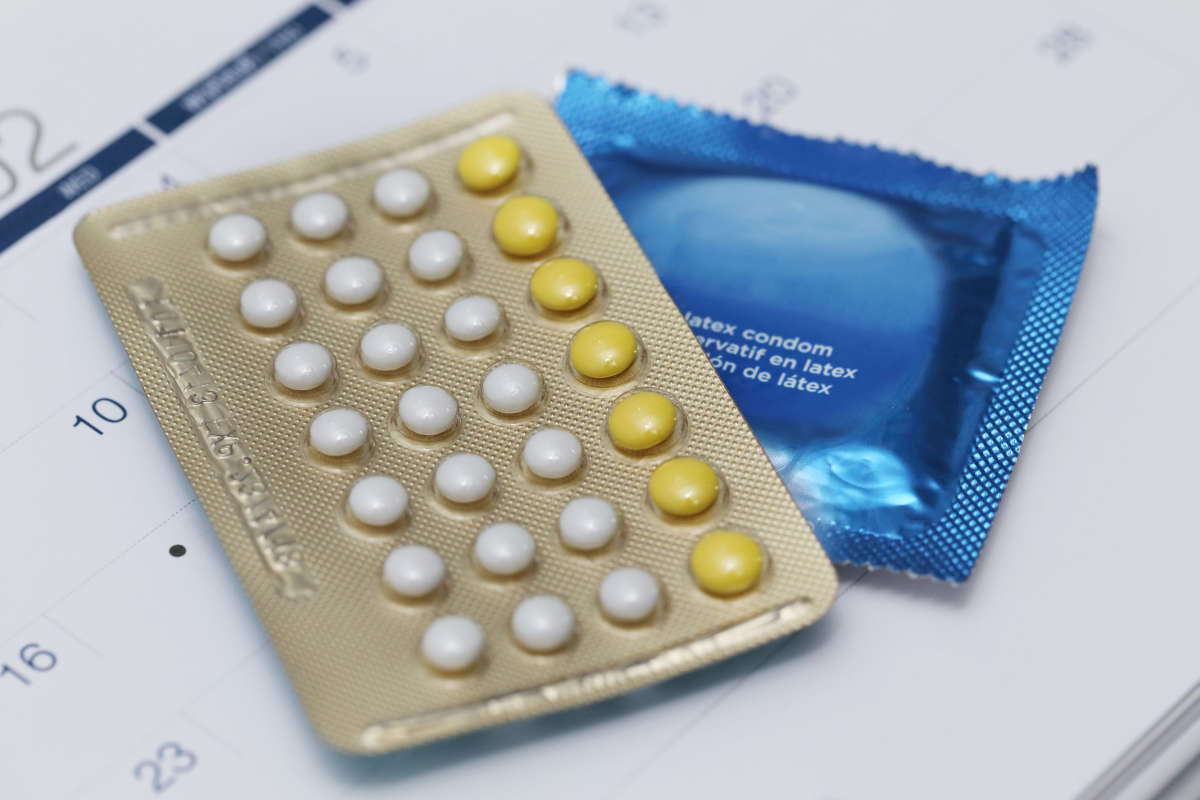Birth Control After Baby: 5 Options for Breastfeeding Moms

Life with a newborn is wonderfully chaotic. Getting pregnant again is probably the last thing on your mind. While safe for your baby, birth control methods that contain estrogen can lower milk supply. But there are methods that are safe for baby and won't affect your milk.

The Benefits of Breastfeeding: They're Not Just for Baby
Learn about all of the benefits associated with breastfeeding your baby.
Learn MoreLearn More
Non-Hormonal Intrauterine Device (IUD)
A non-hormonal IUD, most commonly known by the brand name ParaGard, is a small, T-shaped device that is placed in your uterus by your doctor during an office visit. The IUD releases copper, which creates a hostile environment for sperm and causes the lining of the uterus to shed more often, preventing implantation should an egg become fertilized.
The Association of Reproductive Health Professionals (ARHP) lists the advantages of a copper IUD:
- The lack of hormones make copper IUDs safe for breastfeeding mothers, and women who can't take estrogen or progestin.
- They're reversible and there is a rapid return to fertility after removal.
- Copper IUDs can be used for 10 years, although some studies have shown them to be effective for up to 20 years.
- They can be used as an off-label emergency contraceptive. They can be inserted up to 5 days after unprotected sex, reducing the risk of pregnancy by more than 99 percent.
There are some disadvantages and side effects:
- They don't provide any protection against sexually transmitted diseases (STDs).
- Your doctor has to insert and remove it.
- A copper IUD may make your period longer or heavier, and women with heavy or painful periods may not tolerate it.
- It can cause spotting between periods.
- It can also cause cramps and pain during sex.
- There is a risk of expulsion within the first year, meaning it can fall out.
Progestin-Only Birth Control Pills
Many birth control pills contain a combination of progestin and estrogen. While a small amount of these hormones do enter your milk supply, both are safe for your baby.
Estrogen can lower milk supply, so breastfeeding moms avoid combination pills like these. A Progestin-only pill, also called a "mini-pill," is a safe and effective option. Fully breastfeeding moms can begin taking the mini-pill six weeks after birth, while partially breastfeeding moms can begin taking them three weeks after birth.
Progestin-only pills work by preventing ovulation and thickening the cervical mucus and lining of the uterus to prevent sperm from entering. According to the ARHP, less than 1 out of 100 women will get pregnant when using the pill correctly.
Although all birth control pills should be taken around the same time every day, progestin-only pills must be taken within the same 3 hour window to be the most effective — this can be challenging for a busy new mom.
According to the ARHP, advantages of progestin-only pills include
- They're safe and very effective when used correctly.
- You don't need to think about birth control every time you have sex.
- Most women can get pregnant quickly again after stopping use.
- Your period may become lighter and less painful.
Disadvantages and side effects can include
- Spotting between periods.
- Abdominal pain and cramping.
- Bloating or weight gain.
- Headaches.
- No protection against STDs.
- The pill requires a prescription.
- It's easy to forget to take the pill at the same time every day, reducing its effectiveness.
Barrier Methods

Non-hormonal barrier methods include diaphragms, male and female condoms, contraceptive sponges, cervical caps and spermicidal gel. These methods block sperm from entering the uterus and reaching an egg.
Barrier methods are not as effective as IUDs or progestin-only birth control pills and shots. According to the ARHP, the effectiveness of these methods is increases when both partners understand and talk about how to use them.
Depo-Provera
The birth control shot, known as Depo-Provera, is an injection of progestin given in your arm by your doctor. It protects against pregnancy for about three months. If used correctly, the shot is very effective — fewer than 1 out of 100 women will get pregnant using it.
The first injection takes about seven days to be effective, so use a backup method of birth control during the first week. The shot works the same way progestin-only pills works, by preventing ovulation and thickening the cervical mucus and uterine lining to prevent sperm from entering.
The ARHP offers the following advantages of Depo-Provera:
- The shot is safe and very effective.
- You don't need to remember to take a form of birth control every day.
- You don't need to think about birth control every time you have sex.
- Your periods may be lighter and less painful.
Disadvantages and side effects can include
- It requires a visit to your doctor every 12 weeks for a shot.
- If you want to get pregnant again, it may take up to a year from your last injection.
- Some women experience irregular bleeding, especially during the first 6 to 12 months of use.
- Some women experience bone thinning when on the shot.
Breastfeeding
According to the ARHP, exclusive breastfeeding can be an effective form of birth control — fewer than 1 out of 100 women who exclusively breastfeed will get pregnant within the first six months. But this method is not fool-proof and only works if specific guidelines are strictly followed, which is really tough for most nursing moms.
When you're breastfeeding, your body has increased levels of the hormone prolactin, which prevents ovulation. For this method to work, a breastfeeding mom must meet all of the following criteria:
- Only nurse your baby from the breast (no pumping or supplemental formula).
- Breastfeed your baby every four hours during the day.
- Breastfeed your baby every six hours at night.
- Your period hasn't returned post-birth.
Disadvantages include
- This method only works for about six months. After six months, you'll need to use another form of birth control.
- Some women find it difficult to exclusively breastfeed their baby.
You may also want to check out: Can You Get Pregnant While Breastfeeding?
Talk to your doctor about your options. She can help you decide which one is best for you.